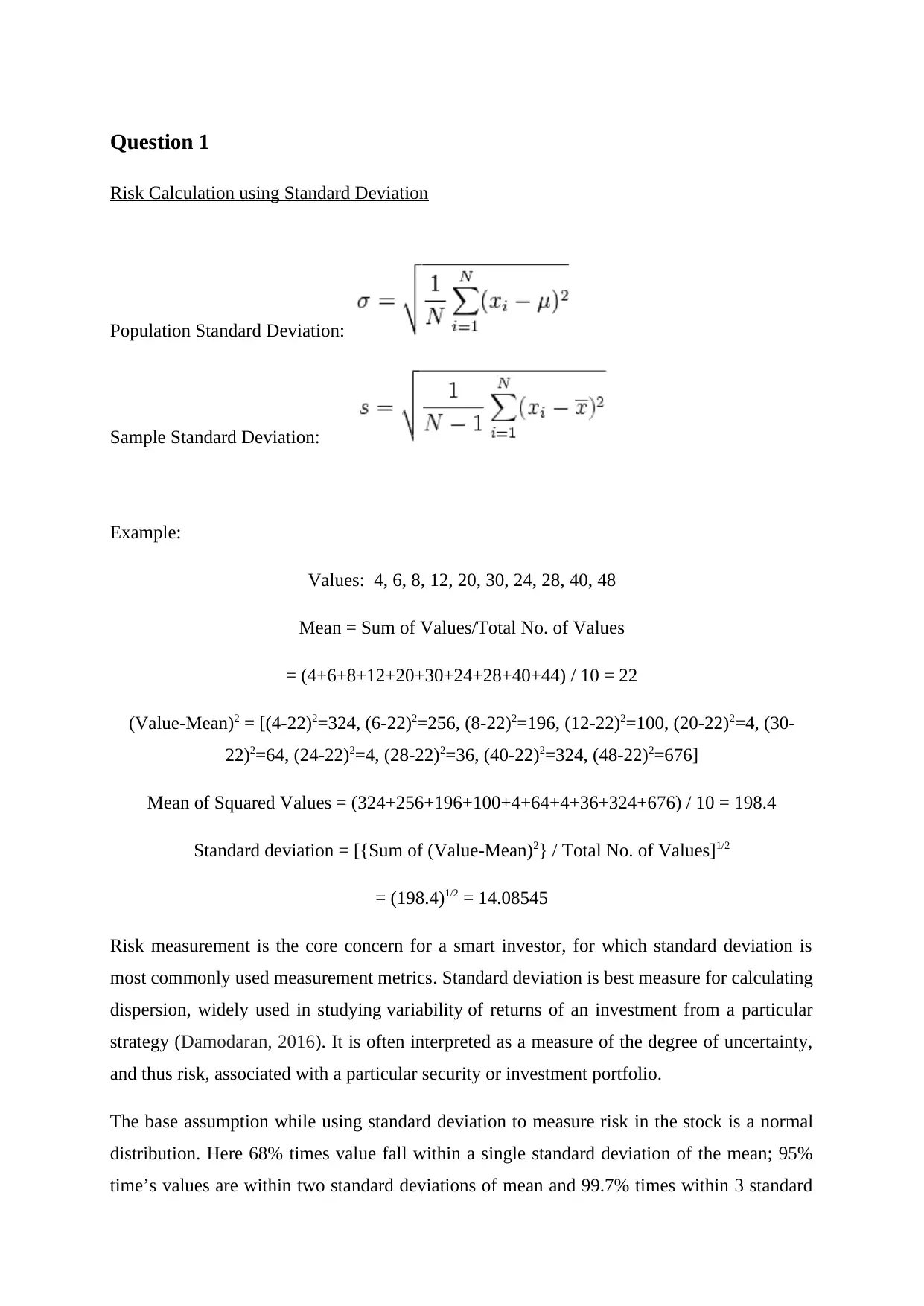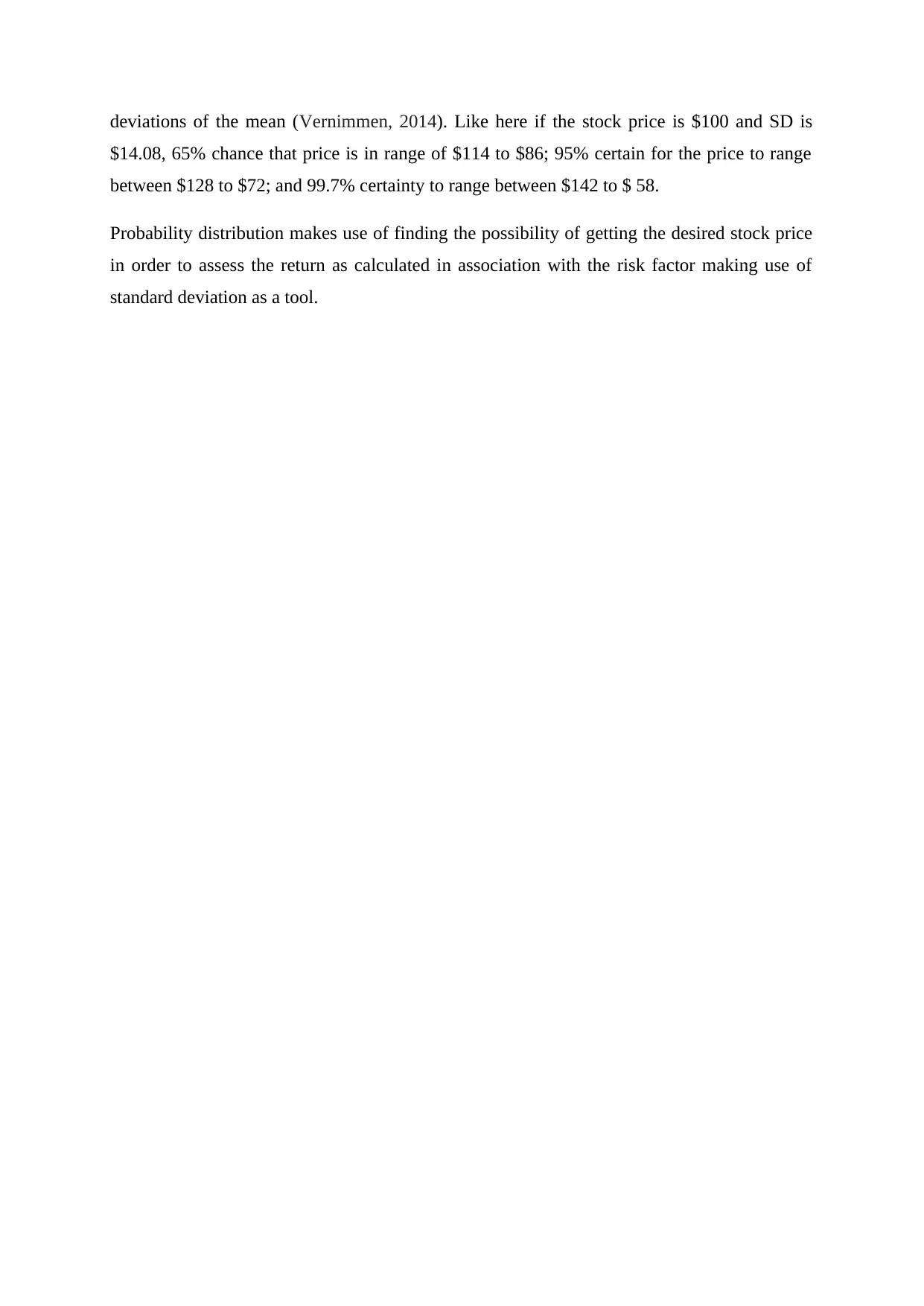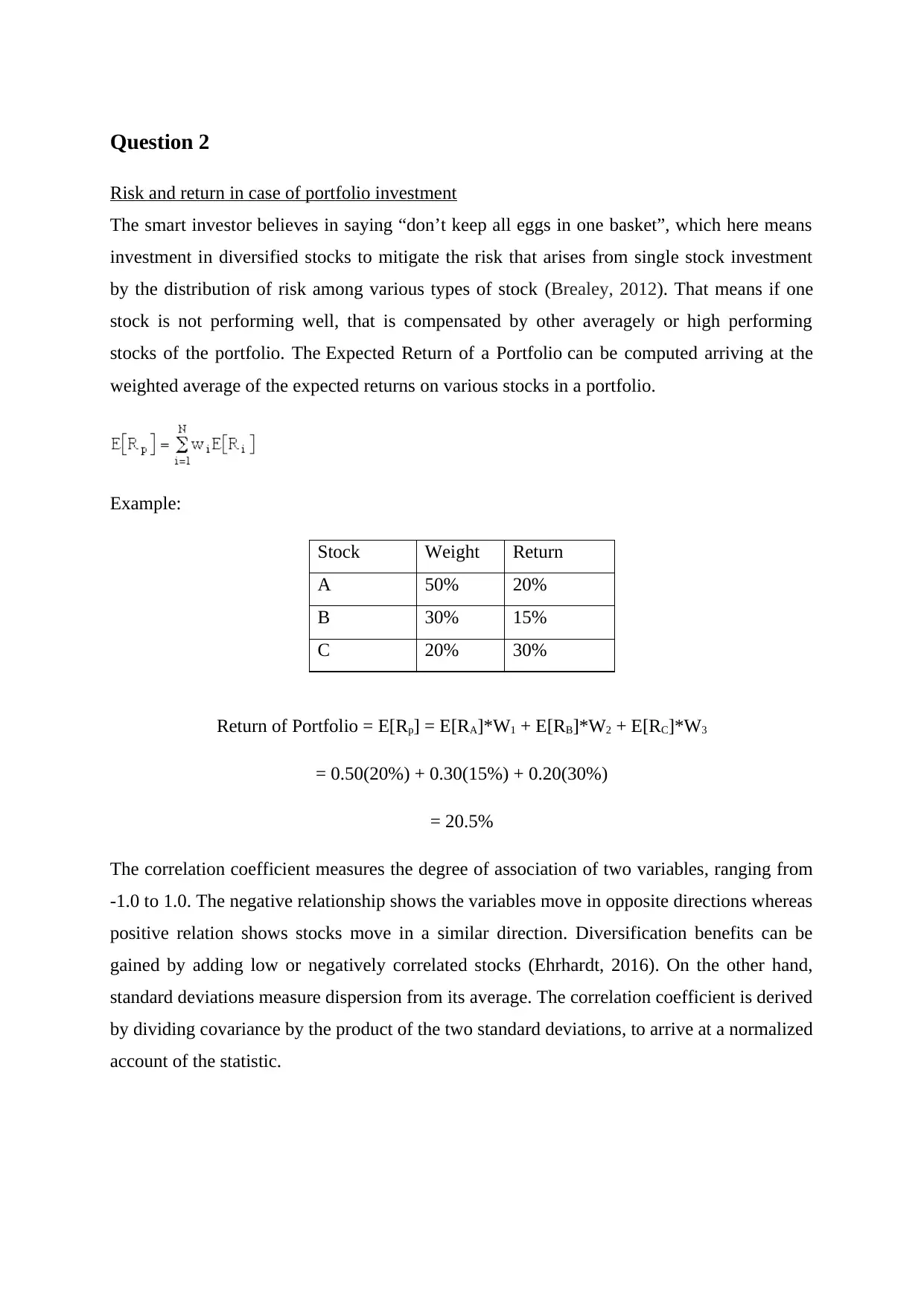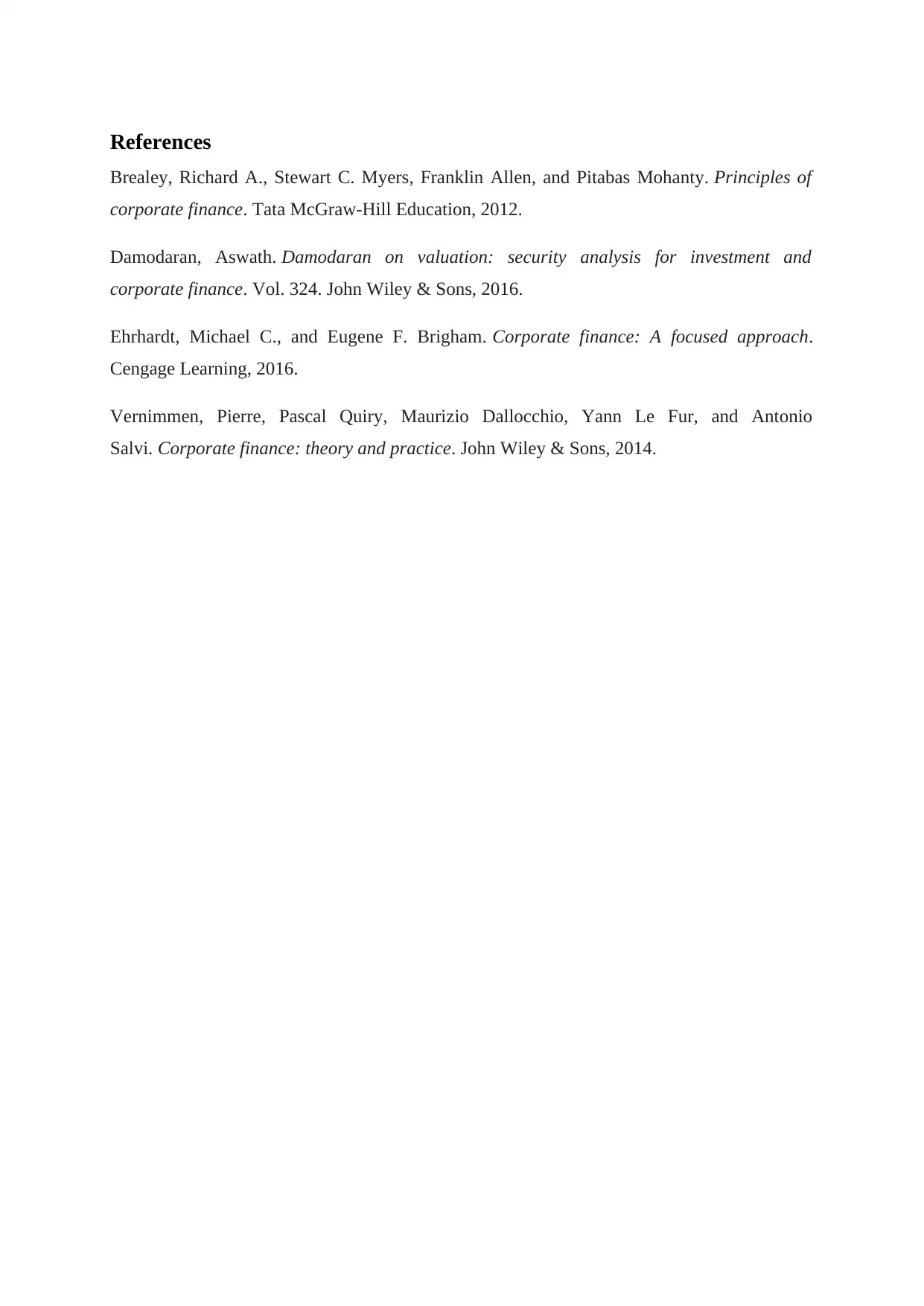Corporate Finance: Risk Calculation and Portfolio Investment Analysis
VerifiedAdded on 2020/03/16
|5
|770
|53
Homework Assignment
AI Summary
This document presents a solution to a corporate finance assignment. It begins by demonstrating the calculation of risk using standard deviation, including a step-by-step example with numerical values. The solution explains the significance of standard deviation as a key metric for investors, emphasizing its role in measuring the dispersion and uncertainty of investment returns. It then transitions to portfolio investment, explaining the principle of diversification and its benefits in mitigating risk. The solution provides a formula for calculating the expected return of a portfolio and illustrates this with a practical example. It also discusses the correlation coefficient and its importance in diversification. The document references several key finance textbooks, including works by Brealey, Damodaran, Ehrhardt, and Vernimmen, to support the concepts presented.
1 out of 5












![[object Object]](/_next/static/media/star-bottom.7253800d.svg)